Abstract
Accurate predictions of carbon and energy cycling rates in the environment depend on sampling frequencies and on the spatial variability associated with biological activities. We examined the variability associated with anaerobic biodegradation rates at two sites in an alluvial sand aquifer polluted by municipal landfill leachate. In situ rates of methane production were measured for almost a year, using anaerobic wells installed at two sites. Methane production ranged from 0 to 560 μmol · m-2 · day-1 at one site (A), while a range of 0 to 120,000 μmol · m-2 · day-1 was measured at site B. The mean and standard deviations associated with methane production at site A were 17 and 57 μmol · m-2 · day-1, respectively. The comparable summary statistics for site B were 2,000 and 9,900 μmol · m-2 · day-1. The coefficients of variation at sites A and B were 340 and 490%, respectively. Despite these differences, the two sites had similar seasonal trends, with the maximal rate of methane production occurring in summer. However, the relative variability associated with the seasonal rates changed very little. Our results suggest that (i) two spatially distinct sites exist in the aquifer, (ii) methanogenesis is a highly variable process, (iii) the coefficient of variation varied little with the rate of methane production, and (iv) in situ anaerobic biodegradation rates are lognormally distributed.
Full text
PDF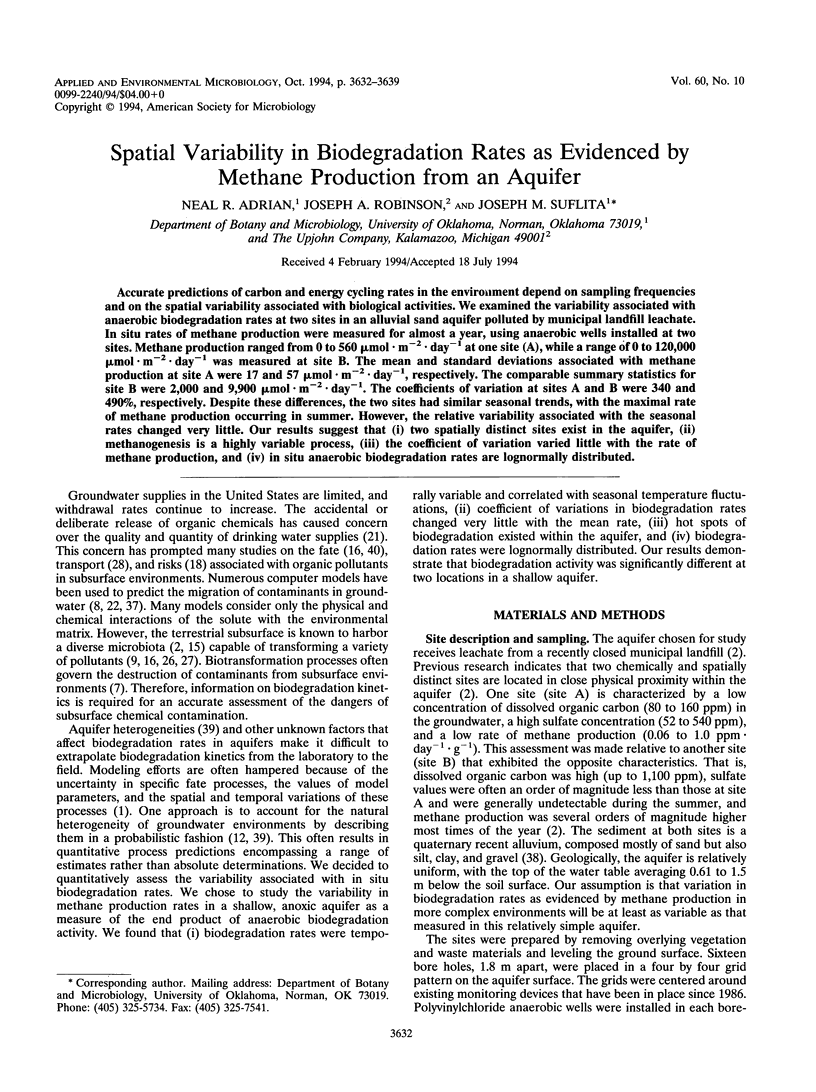
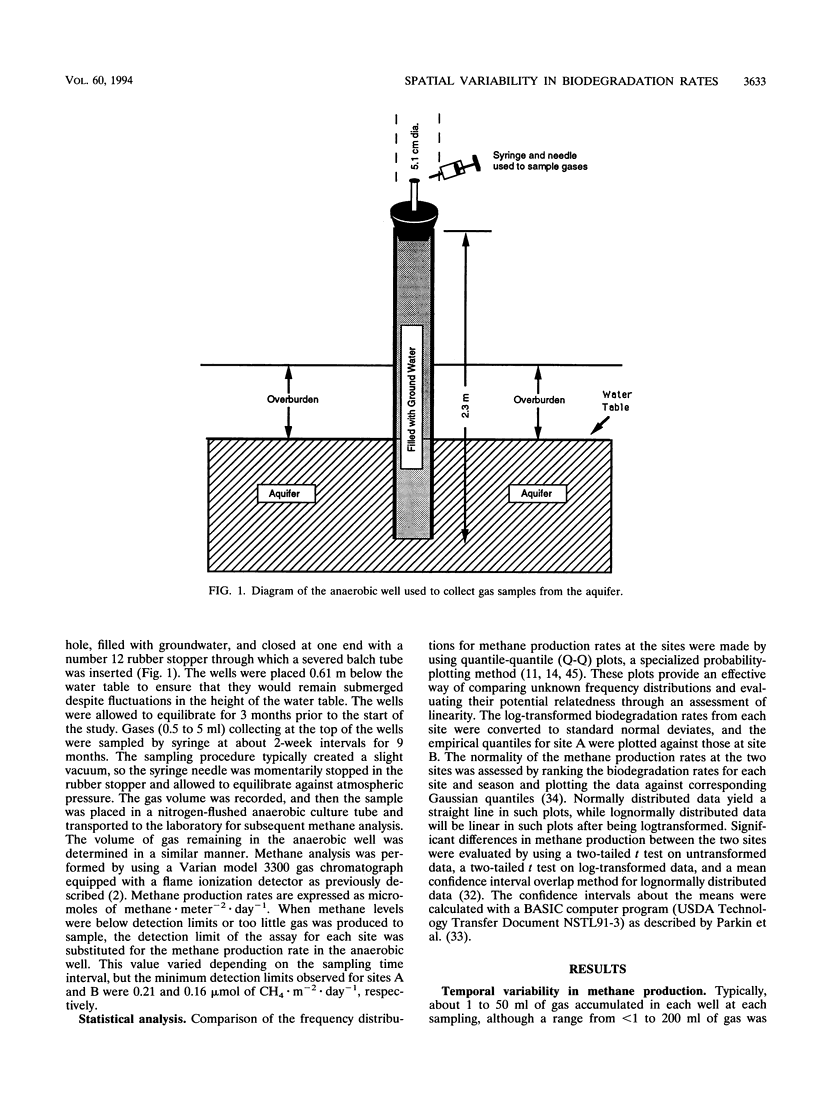
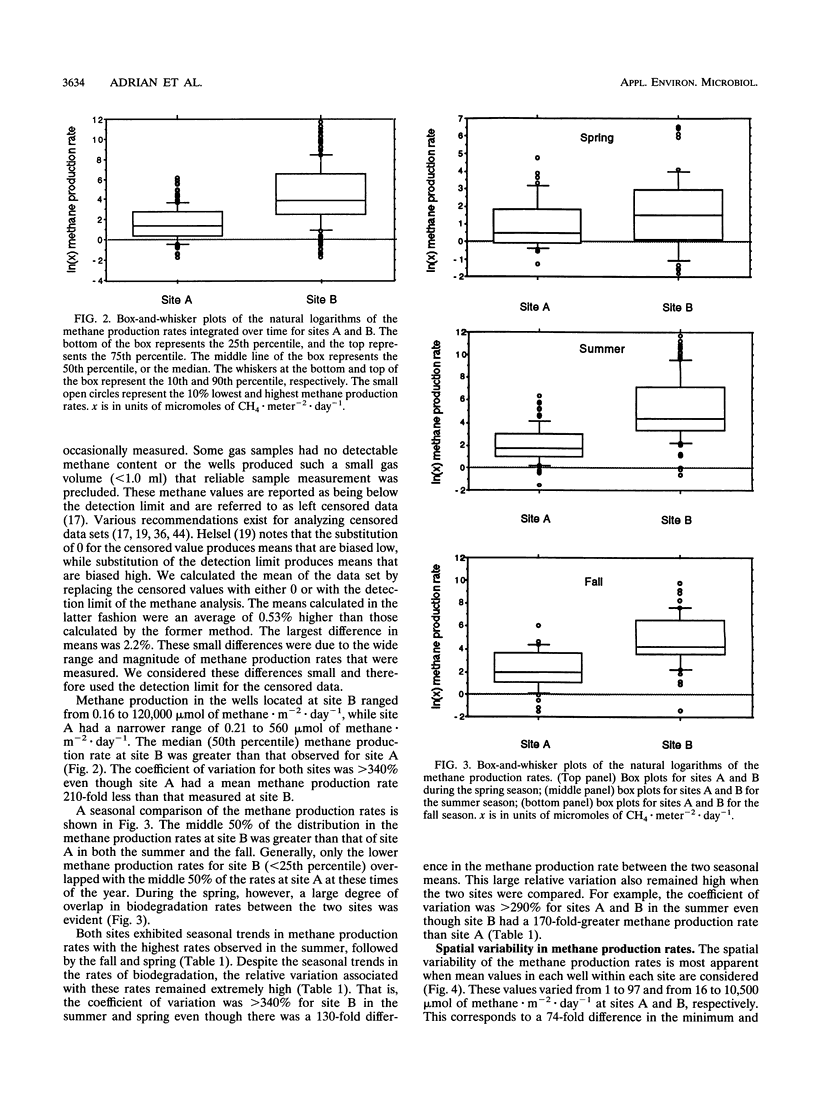
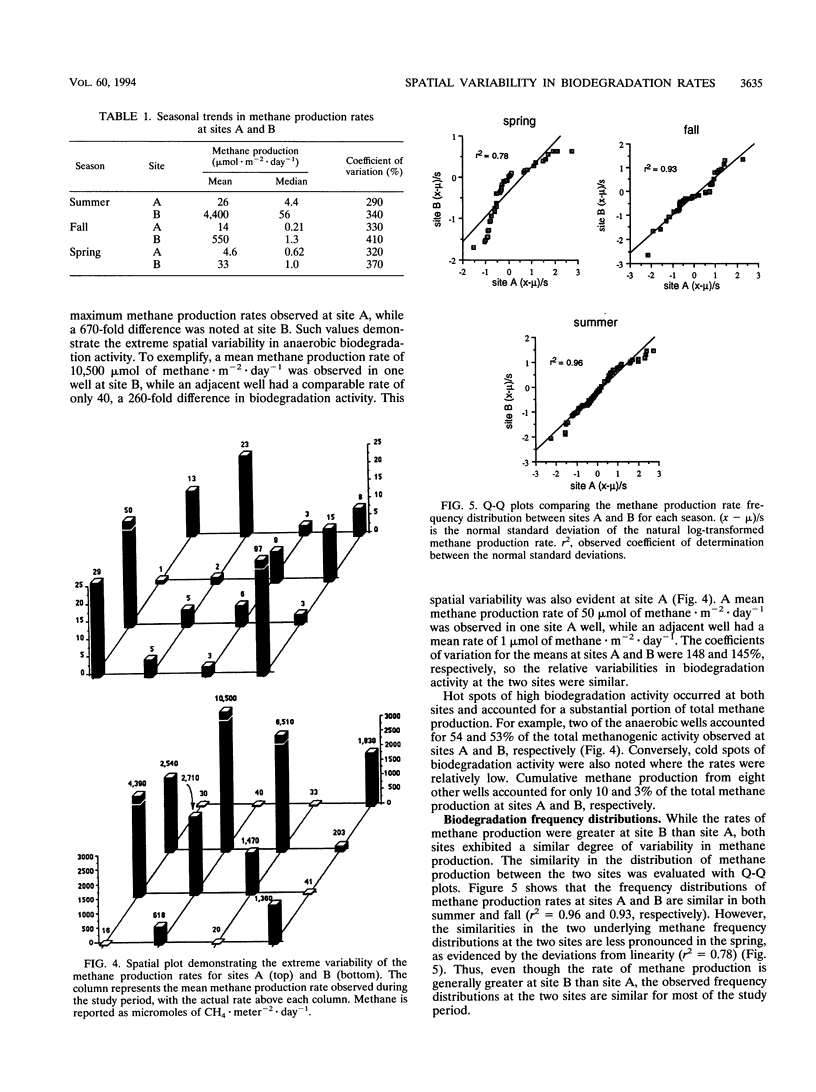
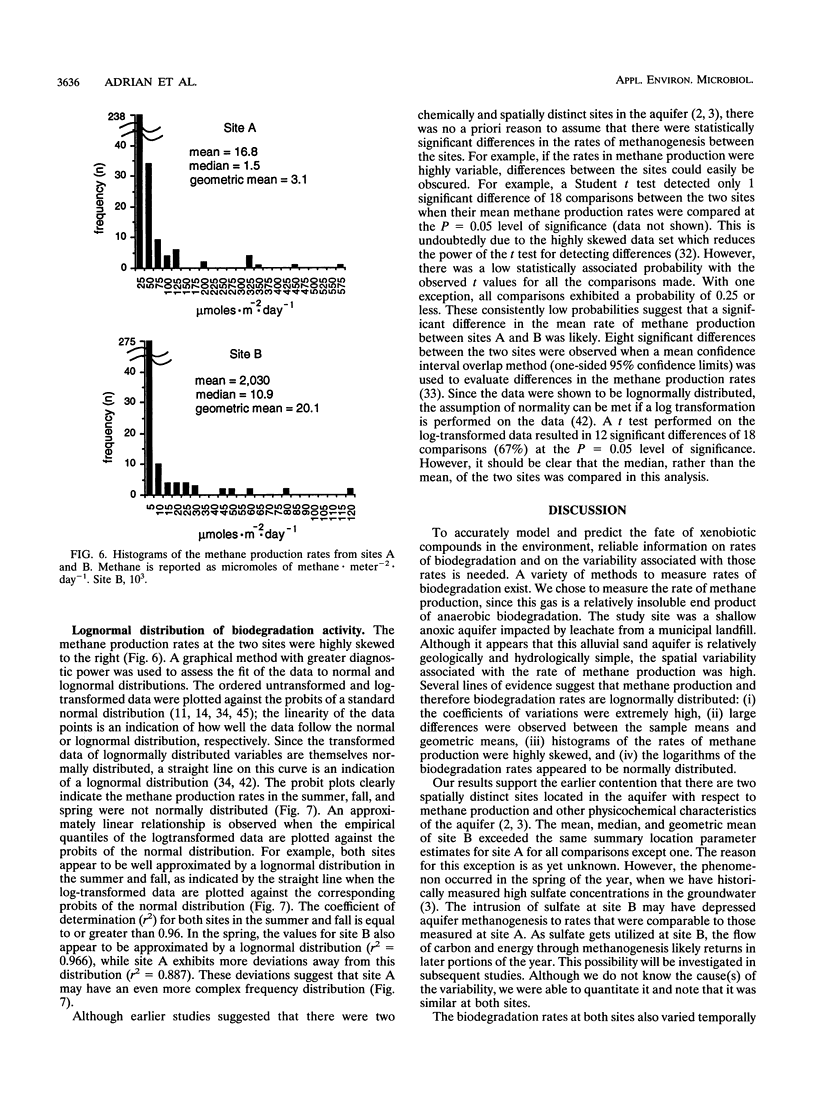
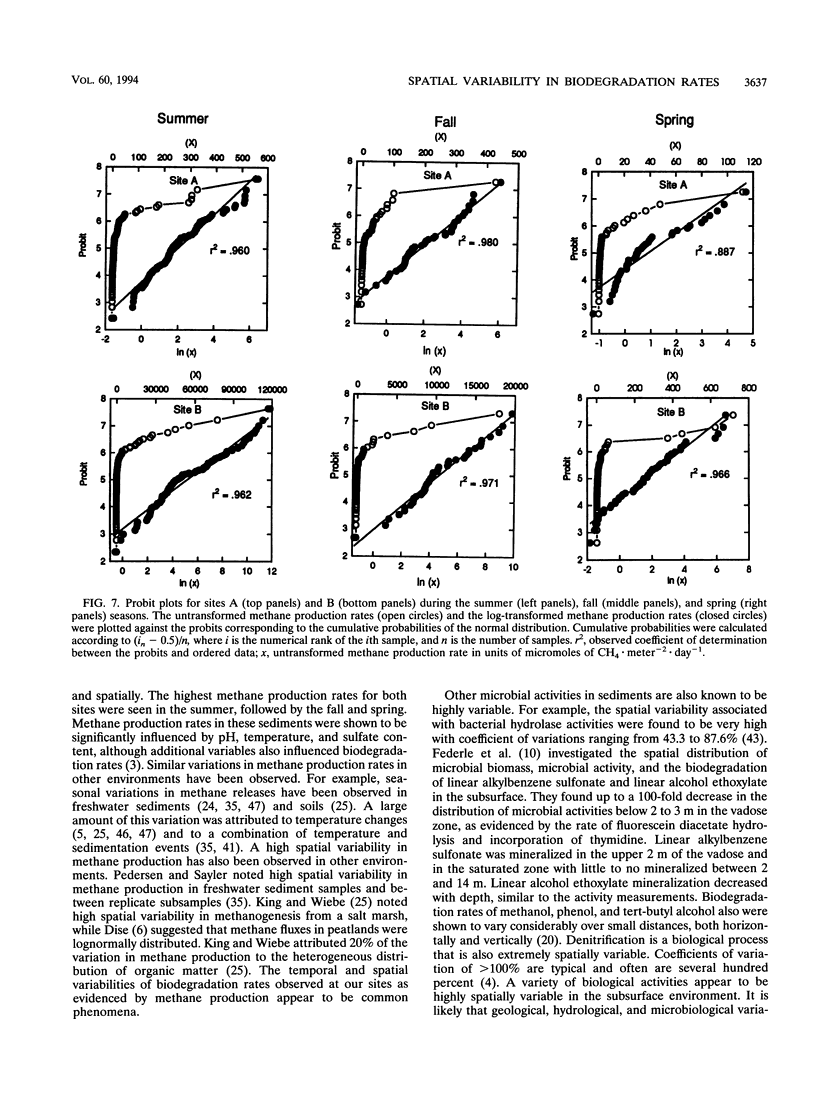
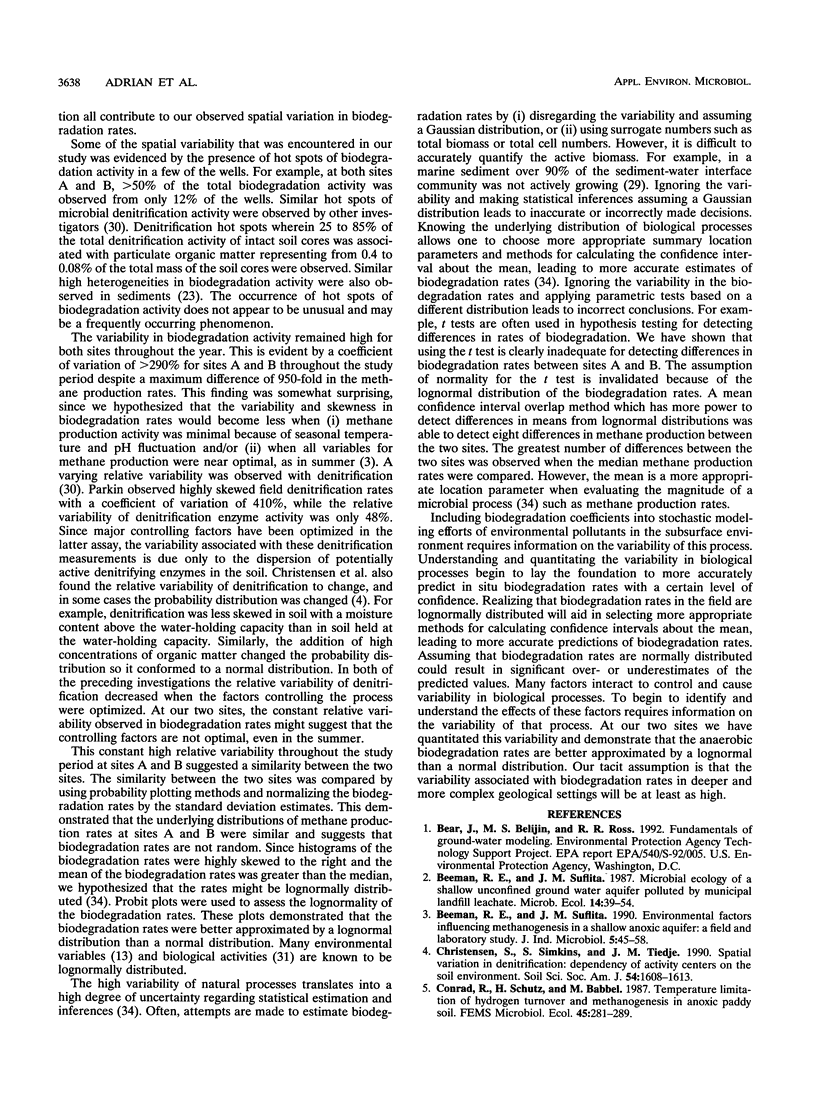
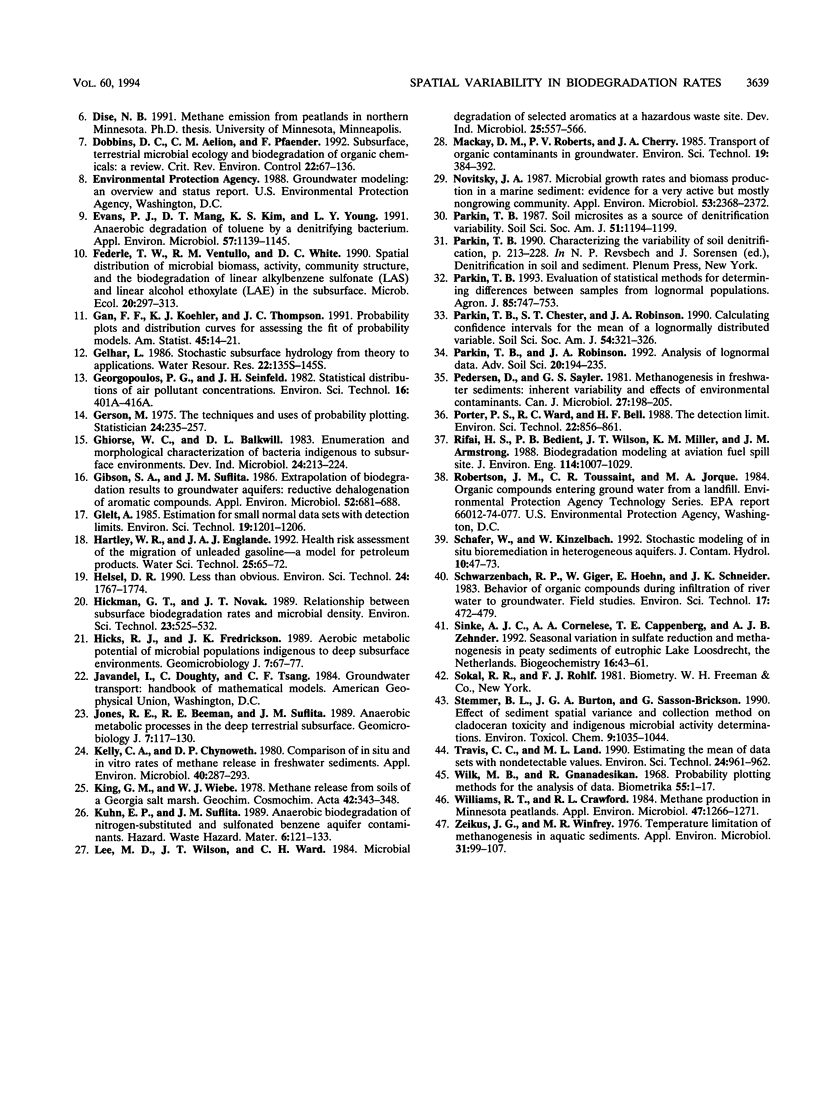
Selected References
These references are in PubMed. This may not be the complete list of references from this article.
- Beeman R. E., Suflita J. M. Environmental factors influencing methanogenesis in a shallow anoxic aquifer: a field and laboratory study. J Ind Microbiol. 1990 Jan;5(1):45–57. doi: 10.1007/BF01569605. [DOI] [PubMed] [Google Scholar]
- Evans P. J., Mang D. T., Kim K. S., Young L. Y. Anaerobic degradation of toluene by a denitrifying bacterium. Appl Environ Microbiol. 1991 Apr;57(4):1139–1145. doi: 10.1128/aem.57.4.1139-1145.1991. [DOI] [PMC free article] [PubMed] [Google Scholar]
- Gibson S. A., Suflita J. M. Extrapolation of biodegradation results to groundwater aquifers: reductive dehalogenation of aromatic compounds. Appl Environ Microbiol. 1986 Oct;52(4):681–688. doi: 10.1128/aem.52.4.681-688.1986. [DOI] [PMC free article] [PubMed] [Google Scholar]
- Kelly C. A., Chynoweth D. P. Comparison of in situ and in vitro rates of methane release in freshwater sediments. Appl Environ Microbiol. 1980 Aug;40(2):287–293. doi: 10.1128/aem.40.2.287-293.1980. [DOI] [PMC free article] [PubMed] [Google Scholar]
- Novitsky J. A. Microbial growth rates and biomass production in a marine sediment: evidence for a very active but mostly nongrowing community. Appl Environ Microbiol. 1987 Oct;53(10):2368–2372. doi: 10.1128/aem.53.10.2368-2372.1987. [DOI] [PMC free article] [PubMed] [Google Scholar]
- Pedersen D., Sayler G. S. Methanogenesis in freshwater sediments: inherent variability and effects of environmental contaminants. Can J Microbiol. 1981 Feb;27(2):198–205. doi: 10.1139/m81-031. [DOI] [PubMed] [Google Scholar]
- Wilk M. B., Gnanadesikan R. Probability plotting methods for the analysis of data. Biometrika. 1968 Mar;55(1):1–17. [PubMed] [Google Scholar]
- Williams R. T., Crawford R. L. Methane production in Minnesota peatlands. Appl Environ Microbiol. 1984 Jun;47(6):1266–1271. doi: 10.1128/aem.47.6.1266-1271.1984. [DOI] [PMC free article] [PubMed] [Google Scholar]
- Zeikus J. G., Winfrey M. R. Temperature limitation of methanogenesis in aquatic sediments. Appl Environ Microbiol. 1976 Jan;31(1):99–107. doi: 10.1128/aem.31.1.99-107.1976. [DOI] [PMC free article] [PubMed] [Google Scholar]


